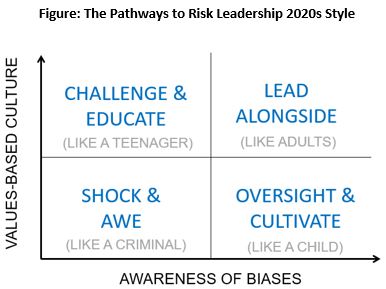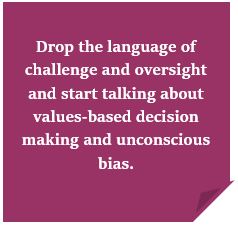In the last couple of months I have been blogging about the failings of the risk function, what Risk Leadership should look like in the next decade and the fundamental flaw organisations make in implementing the Three Lines of Defence risk management model.
While throwing stones is easy, it is not so helpful to risk professionals for which the Three Lines of Defence is mandated. For example, by a regulator. So here are some tips on how you might go about it.
The challenge of implementing the Three Lines of Defence approach while shifting to Risk Leadership 2020s style is shown in the Figure below. It is based on the extent leaders in your organisation ensure each decision holds true to organisational values and follows a process to manage unconscious bias. They key to excellence in decision making.

If your organisation has leaders that are consistently making decisions that do not hold true to your organisation’s declared values and they are lacking awareness that they have unconscious biases that affect their decision making, then your job is a tough one. Some shock and awe will be required. Hopefully shocks you can generate through strong analysis and your influence, not by waiting for organisational calamities.
A little easier is when your leaders for the main are aware of their unconscious biases but are letting themselves down by not living true to organisational values. Here the board or senior executive will need you to provide oversight by way of close support until you and they are able to cultivate a strong values-based culture. You must use your influencing skills to constantly remind leaders how their decisions align or fail to align with the organisation’s values.

Similar but different is when your leaders are working to do their best to fulfil organisational purpose while holding true to the organisation’s values but are lacking in their awareness of unconscious biases. Here the board or senior executive will need you to use your influencing skills to subtly challenge decisions where you see fit. More importantly your role is to educate them about bias.
Finally, once you have moved your organisation into a position where leaders are making decisions in full consideration of organisational values and they are aware of unconscious bias, then it is time to step to the side and lead alongside.
And the secret to getting to into the top right of Figure 3 is to drop the language of challenge and oversight and start talking about values-based decision making and unconscious bias.

